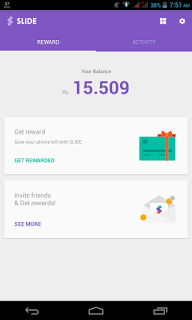What Is Li-Fi
Li-Fi Is More 100% Faster Then Your Wi-Fi More Information Scroll Down
Li-1st, the first Li-Fi equipment
Li-Fi (Light Fidelity) is a bidirectional, high speed and fully networked wireless communication technology similar to Wi-Fi. Coined by Prof. Harald Haas,[1] Li-Fi is a subset of optical wireless communications (OWC) and can be a complement to RF communication (Wi-Fi or Cellular network), or a replacement in contexts of data broadcasting. It is so far measured to be about 100 times faster than Wi-Fi, reaching speeds of 224 gigabits per second.[2]
It is wireless and uses visible light communication or infra-red and near ultraviolet (instead of radio frequency waves) spectrum, part of optical wireless communications technology, which carries much more information, and has been proposed as a solution to the RF-bandwidth limitations.[3] A complete solution includes an industry led standardization process.
Technology details Edit
This OWC technology uses light from light-emitting diodes (LEDs) as a medium to deliver networked, mobile, high-speed communication in a similar manner to Wi-Fi.[4] The Li-Fi market is projected to have a compound annual growth rate of 82% from 2013 to 2018 and to be worth over $6 billion per year by 2018.[5]
Visible light communications (VLC) works by switching the current to the LEDs off and on at a very high rate,[6] too quick to be noticed by the human eye. Although Li-Fi LEDs would have to be kept on to transmit data, they could be dimmed to below human visibility while still emitting enough light to carry data.[7] The light waves cannot penetrate walls which makes a much shorter range, though more secure from hacking, relative to Wi-Fi.[8][9] Direct line of sight isn't necessary for Li-Fi to transmit a signal; light reflected off the walls can achieve 70 Mbit/s.[10][11]
Li-Fi has the advantage of being useful in electromagnetic sensitive areas such as in aircraft cabins, hospitals and nuclear power plants[citation needed] without causing electromagnetic interference.[8][9] Both Wi-Fi and Li-Fi transmit data over the electromagnetic spectrum, but whereas Wi-Fi utilizes radio waves, Li-Fi uses visible light. While the US Federal Communications Commission has warned of a potential spectrum crisis because Wi-Fi is close to full capacity, Li-Fi has almost no limitations on capacity.[12] The visible light spectrum is 10,000 times larger than the entire radio frequency spectrum.[13] Researchers have reached data rates of over 10 Gbit/s, which is much faster than typical fast broadband in 2013.[14][15] Li-Fi is expected to be ten times cheaper than Wi-Fi.[7] Short range, low reliability and high installation costs are the potential downsides.[5][6]
PureLiFi demonstrated the first commercially available Li-Fi system, the Li-1st, at the 2014 Mobile World Congress in Barcelona.[16]
Bg-Fi is a Li-Fi system consisting of an application for a mobile device, and a simple consumer product, like an IoT (Internet of Things) device, with color sensor, microcontroller, and embedded software. Light from the mobile device display communicates to the color sensor on the consumer product, which converts the light into digital information. Light emitting diodes enable the consumer product to communicate synchronously with the mobile device.[17][18]
History Edit
Professor Harald Haas, from the University of Edinburgh in the UK, is widely recognised as the original founder of Li-Fi. He coined the term Li-Fi and is Chair of Mobile Communications at the University of Edinburgh and co-founder of pureLiFi.[12]
The general term visible light communication (VLC), includes any use of the visible light portion of the electromagnetic spectrum to transmit information. The D-Light project at Edinburgh's Institute for Digital Communications was funded from January 2010 to January 2012.[19] Haas promoted this technology in his 2011 TED Global talk and helped start a company to market it.[20] PureLiFi, formerly pureVLC, is an original equipment manufacturer (OEM) firm set up to commercialize Li-Fi



Comments
Post a Comment